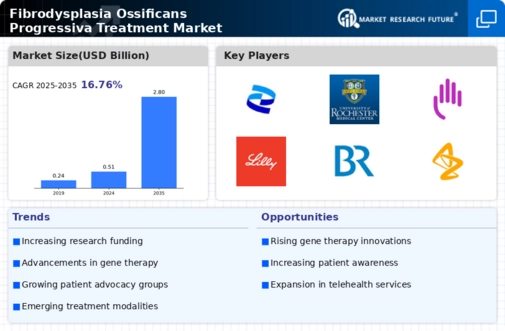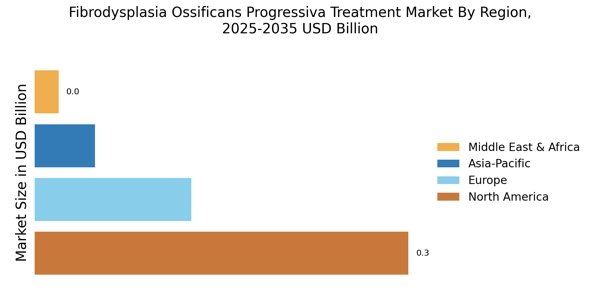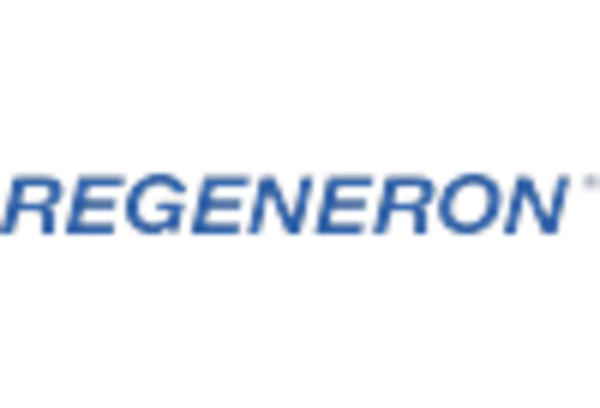Increased Awareness and Advocacy
The growing awareness and advocacy surrounding Fibrodysplasia Ossificans Progressiva play a significant role in shaping the Fibrodysplasia Ossificans Progressiva Treatment Market. Patient advocacy groups and organizations are actively working to educate the public and healthcare professionals about FOP, which has led to improved diagnosis and treatment options. This heightened awareness is crucial, as it encourages funding for research and development, ultimately leading to the introduction of new therapies. Additionally, as more individuals become informed about FOP, there is a greater demand for specialized care, which further drives the market. The collective efforts of advocacy groups are likely to continue influencing the Fibrodysplasia Ossificans Progressiva Treatment Market positively.
Emergence of Personalized Medicine
The shift towards personalized medicine is transforming the Fibrodysplasia Ossificans Progressiva Treatment Market. Tailored treatment approaches that consider individual patient characteristics are becoming increasingly prevalent. This trend is particularly relevant for rare diseases like FOP, where genetic variations can significantly influence treatment outcomes. Advances in genomic medicine and biotechnology are enabling the development of personalized therapies that target specific pathways involved in FOP. As healthcare providers adopt these personalized strategies, the effectiveness of treatments is likely to improve, leading to better patient outcomes. This evolution towards personalized medicine is expected to drive growth within the Fibrodysplasia Ossificans Progressiva Treatment Market, as it aligns with the broader trend of individualized healthcare.
Advancements in Research and Development
Innovations in research and development are crucial for the Fibrodysplasia Ossificans Progressiva Treatment Market. The scientific community is increasingly focused on understanding the underlying mechanisms of FOP, which has led to the exploration of novel therapeutic approaches, including gene therapy and targeted treatments. Investment in R&D has surged, with pharmaceutical companies allocating substantial resources to develop effective therapies. For instance, the market is witnessing a rise in clinical trials aimed at evaluating the efficacy of new drugs, which could potentially transform treatment paradigms. This emphasis on R&D not only enhances the treatment landscape but also attracts investment, thereby fostering growth within the Fibrodysplasia Ossificans Progressiva Treatment Market.
Regulatory Support for Rare Disease Treatments
Regulatory bodies are increasingly recognizing the need for effective treatments for rare diseases, including Fibrodysplasia Ossificans Progressiva. This regulatory support is a key driver for the Fibrodysplasia Ossificans Progressiva Treatment Market. Initiatives such as orphan drug designations and expedited review processes are designed to encourage the development of therapies for conditions with limited treatment options. Such regulatory frameworks not only facilitate faster access to innovative treatments but also provide financial incentives for pharmaceutical companies. As a result, the market is likely to see an influx of new therapies aimed at addressing the unique challenges posed by FOP, thereby enhancing the Fibrodysplasia Ossificans Progressiva Treatment Market.
Rising Prevalence of Fibrodysplasia Ossificans Progressiva
The increasing incidence of Fibrodysplasia Ossificans Progressiva (FOP) is a pivotal driver for the Fibrodysplasia Ossificans Progressiva Treatment Market. As awareness of this rare genetic disorder grows, more cases are being diagnosed, leading to a heightened demand for effective treatment options. Recent estimates suggest that FOP affects approximately 1 in 2 million individuals, which, while rare, translates to a significant number of patients globally. This rising prevalence necessitates the development of specialized therapies and interventions, thereby propelling the market forward. Furthermore, as healthcare providers become more informed about FOP, the identification and management of this condition are likely to improve, further stimulating the Fibrodysplasia Ossificans Progressiva Treatment Market.


















Leave a Comment